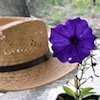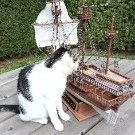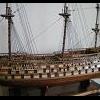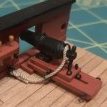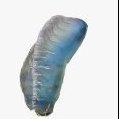Supplies of the Ship Modeler's Handbook are running out. Get your copy NOW before they are gone! Click on photo to order.
×
-
Posts
676 -
Joined
Reputation Activity
-
 David Lester got a reaction from Rudolf in Charles W Morgan 1841 by toms10 - FINISHED - 1:96 - POB
David Lester got a reaction from Rudolf in Charles W Morgan 1841 by toms10 - FINISHED - 1:96 - POB
Tom, your CWM is looking wonderful. That white edge is a nightmare to paint. My wife almost had me committed before I was finished. Yours isn't looking too bad, but I just could not get a decent job. In the end I painted some paper white, cut it into strips and glued it on. That worked really well and it was completely undetectable what I had done.
I agree with John - I think you've nailed the bulwarks colour. It's a hard colour to get just right.
David
-
 David Lester got a reaction from Mr Whippy in Rattlesnake by Dave_E - Model Shipways - 1:64
David Lester got a reaction from Mr Whippy in Rattlesnake by Dave_E - Model Shipways - 1:64
Hi Dave,
I agree with both comments above; a piece of basswood will work just fine for the anchor stocks and I have never used a build board. I glue the bulkheads in one at a time. It's a slow process but works just fine. Then when it's down to planking and sanding, the hull seems to spend as much time on my lap as it does on the bench.
I'm looking forward to following your progress. I've built the Mamoli Rattlesnake, which my grandson now has, but I'd like to build it again, this time the MS version. I have a real soft spot for this one. I credit it as the reason I got into building model ships. I've told the story on the forum before, but it was a quite a while ago now. When I was a kid my best friend's dad built model ships and I was mesmerized by them. I've forgotten the names of most of them, but what little kid could forget the name Rattlesnake. My friend still has it. This model would be about 60 years old now. I don't know if it's a kit or from scratch, but the way he handled the stern makes me think this might be a scratch build.
Look at the unusual colour he used for the bulwarks. I believe the MS instructions suggest that the bulwarks should be gray. I guess that's what he was going for, but this is almost a pale blue. Also look at the flag. I don't know much (let's be honest - I know nothing) about flags, but I'm pretty sure this can only be a British ensign. My friend's dad was a real history buff and serious anglophile, so he must have opted to display the model after it was captured by the British. From what I've read, I understand that it was first re-named Cormorant by the British and then later changed the name back to Rattlesnake.
Sorry, I hope I haven't hijacked your build log too seriously with this digression.
David
-
 David Lester reacted to John Ruy in 1921 Bluenose by John Ruy - FINISHED - Model Shipways - 1/64 scale - Canadian Fishing Schooner
David Lester reacted to John Ruy in 1921 Bluenose by John Ruy - FINISHED - Model Shipways - 1/64 scale - Canadian Fishing Schooner
Thanks David, I appreciate your input. I followed your Bluenose build and am referencing it as I proceed. I was aware of this issue as I assembled the Stern and will keep this in mind going forward.
I am currently using the rail piece as a guide to shape the stern and hopefully avoid the issue.
It does look like I will need to widen the rail, reshape the stern narrower or both.
Thanks again for the heads up, I will keep an eye 🧐 on the planking in this area.
Cheers 🍻
-
 David Lester got a reaction from Cathead in 1921 Bluenose by John Ruy - FINISHED - Model Shipways - 1/64 scale - Canadian Fishing Schooner
David Lester got a reaction from Cathead in 1921 Bluenose by John Ruy - FINISHED - Model Shipways - 1/64 scale - Canadian Fishing Schooner
Your transom is looking good, John. I've built this kit twice now and while it's generally not a difficult build, that transom is tricky. It looks to me that you're in good shape. Once it's done, the worst is over! This is an easy and enjoyable hull to plank.
One little problem that does lie ahead of you though, and which you may have already discovered from other build logs, is the provided stern rail piece - it just doesn't fit. One option is to scrap it altogether and scratch build a new one, but I ended up just cutting it into three pieces - a centre piece at the stern and two side pieces and then adding a couple of filler pieces to widen it and change its profile slightly which made it fit. This worked quite well.
David
-
 David Lester reacted to DelF in Duchess of Kingston by Delf - FINISHED - Vanguard Models - 1:64 - Boxwood version
David Lester reacted to DelF in Duchess of Kingston by Delf - FINISHED - Vanguard Models - 1:64 - Boxwood version
Anchor cable
This will be my last post for a while as we fly to Vancouver tomorrow for the start of our Alaska cruise - subject to Covid testing, which is still a requirement for cruise passengers.
As a last little job before departure I managed to find some more displacement activity to avoid ratlines until our return. I wanted to fit the anchor cables before the deck became too cluttered so I set up the Rope Rocket to make my own. I felt the kit line was too heavy at 2mm. According to the usual references the circumference of a ship's bower anchor cable was 0.62 times the diameter of the main mast. So with an 8mm main mast the cable would be 4.96mm round and therefore 1.58mm in diameter. After some trial and error I made a length of 4-strand rope, each strand consisting of five lengths of Mara #70, given a final diameter of 1.50mm which I felt was close enough. I always prefer to go under rather than over-scale. I should add that I only set the ropewalk up to produce one metre of rope - no point wasting material!
Here's the result, and a comparison with the kit rope:
I threaded the cable through the hatch, then dry-fitted it to the deck to check it looked OK and would thread through the hawse holes:
I'm quite happy with that, so on return I'll dampen the cable down with some very dilute pva and hold it down with small weights while it dries.
I'm off to pack that saw so I cut smuggle some of that Alaskan Yellow Cedar 😁.
Derek
-
 David Lester reacted to abelson in US Brig Niagara by Abelson - Model Shipways - 3/16" scale
David Lester reacted to abelson in US Brig Niagara by Abelson - Model Shipways - 3/16" scale
Moving on to the stern framing, I removed the bulkheads to make it easier to handle the keel and for fear of breaking off the timber heads. Next, I glued the laser-cut stern timbers in-place and then the horn timbers on each side of the center keel. Note: There is a slight difference in the size of the inner and outer timbers. To be sure, I placed them on the respective timbers in Detail 2F. I added filler blocks between the timbers. The deck beam was added before gluing the corner filler blocks. Note: The Deck Plan calls out a 5/32”x 3/32” deck beam. The kit does not come with this size stock nor is there any 5/32” wood strip. I used a scrap piece of 5/32” x 5/32” wood strip and cut it down to size. I also used 5/32”x 5/32” strip for the filler blocks. I held off on installing the beam until the stern timbers dried sufficiently. I added a little CA to the joints. I glued the corner fillers. Whence the glue was dried sufficiently, I finish-shaped the corner blocks. I decided to add the top stiffeners before adding quarter stanchions.
I added the laser-cut center keel filler between the Horn Timbers. The fore side of the filler needs to be concave as illustrated on the Deck Plan. The quarter stanchions are laser-cut. They need to be tapered to 3/32” at the rail. The bottom of the stanchion needs to be shaped to receive the arch beam (see Detail 2D). A small piece of 3/32”x 3/32” is required between the quarter stanchion and the outer stern timber. Note: The quarter stanchions have an inner stanchion that is shown but not labelled in Detail 2D. It’s also shown on the Deck Plan. Detail 2D shows this in plan view, but it’s not labelled. I completed the plan view on my Sheet 2. I’m including it in this log for reference. I used yellow glue to attach the quarter stanchions. I added a little CA to secure them. I made the inner quarter stanchions from the same laser-cut stock as the quarter stanchions. The inner stanchions conform to the profile of the quarter stanchions. The outer stern timber on the starboard side broke off so I had to glue it. In so doing, the spacing between it and the inner stern timber is little wider. I'll have to make an adjustment in the gun port filler piece to correct this.
Looking at Detail 2D, the rake on the 3/32” stiffener between bulkhead Q and the quarter stiffener doesn’t look quite right. So, I looked at some other build logs, which confirm that the rake of the stiffener is much steeper then it appears in Detail 2D. I went ahead and added the 3/32” square stiffeners. The next thing to do on the stern framing is the arch board. I presume the 5/64”x 5/32” is arched as depicted in the Stern View on Sheet 2. The notches for the arch board on the underside of the outer stern timbers are slightly lower than the inner stern timbers for this purpose. I cut out the Stern View and used it as a template to cut a scrap piece of 5/32” basswood board. I glued the arch board to the stern on edge. The ends were trimmed to finish it off.
To finish up the stern framing, I added the gun port sills and filler pieces. There’s no discussion on this in the instruction manual. I used the Stern View on Sheet 2 as a guide. The plan doesn’t call out the size timber to use. I used 3/32” square wood strips. In hindsight, I should have used larger stock and filed/sanded it down to match the profile of the stern Timbers. I scaled the plan to determine the dimensions of the gun port opening (2.5’ wide x 3’ high at 3/16” scale). The filler pieces are cut on an angle. With the stern framing complete, I’ll move on to permanently setting up the bulkheads. Stay tuned.
-
 David Lester reacted to abelson in US Brig Niagara by Abelson - Model Shipways - 3/16" scale
David Lester reacted to abelson in US Brig Niagara by Abelson - Model Shipways - 3/16" scale
Continuing to make progress on the ship. I thought I had the stern filler blocks at the desired shape until I looked at some other build logs where the filler blocks have a shallower profile. So, I decided to shape the filler blocks some more to make the transition of the stern planking less abrupt (Not sure if it’s that obvious in the side by side photos).
I moved on to the quarter boats and the stern boat. I applied wood filler to the exterior hull surfaces to even out the undulations. I sanded the hulls and repeated the process until the hull surfaces were smooth. I test fit the keel and sanded the straight bow of each boat to mate with the keel. The keels mate well except for the bow on one of the quarter boats. A little filler will be necessary on that one. I plan to cut off the rudder as suggested in the instruction manual. I shaped (rocked) the gunwales with a sanding block. The boats are finished to the point where I can start adding frames, floorboards, moldings, etc.
Going back to the center keel, I added the scrap pieces over the slots before moving on to beveling the bulkheads. These need to be shaped to accommodate the octagonal shape of the lower end of the main and fore masts. I made them from scape basswood blocks. I think they would have been difficult to install with the bulkheads in-place.
I beveled the various bulkheads and, like some other build logs, I added blocks between bulkheads A&B, B&C, C&D, O&P, and P&Q to provide support for the curved planks. I used balsa wood purchased from Hobby Lobby. The wood is soft and easy to shape with a Dremel, file, and sandpaper. I Whence they’re glued in-place they can be final-shaped to follow the contour of the bulkheads. I found it easier to bevel the laser cut bulkheads with a Dremel, sanding block, and file rather with a x-acto knife. So far, so good. Before gluing the bulkheads in-place, I plan to construct the stern framing and mount the corner filler blocks. Update to follow.
-
 David Lester reacted to abelson in US Brig Niagara by Abelson - Model Shipways - 3/16" scale
David Lester reacted to abelson in US Brig Niagara by Abelson - Model Shipways - 3/16" scale
The stern filler blocks are a source of consternation and require a lot of thought. I didn’t find much discussion on how to fashion these, so I thought I would provide more detail and photos for future builders. If you can’t see three dimensionally it’s difficult to follow the pictorial (isometric) view in Detail 2G. I studied the details on sheet 2 and, using them as a reference, transferred the lines onto the ¾”x2”x2” blocks (see photo). This gave a two-dimensional image of the filler blocks from which to cut out. From there it’s matter of shaping the blocks to the desired profile. I cut the blocks out with a jewelers saw. The width of the block has to be trimmed 1/16” to match the plan view in Detail 2H. I roughly shaped the filler blocks with a Dremel and hand sanding before gluing them onto bulkhead Q. I made sure the tops of the blocks were aligned with the laser-cut stern timbers. At this point, the filler blocks need to be carved or sanded to match the profile of the bearding line. Caution: the sterns timbers are fragile. One of them snapped at the notch while I was positioning it into the notch in bulkhead Q. Glued it together with CA. I feel that have the stern filler blocks at the desired shape – time will tell when the time comes to plank the stern.
Because the stern timbers are so fragile, I’m going to hold off on installing them until I set all of the bulkheads. But first, I decided to make the corner filler blocks from the ½”x1”x2” basswood blocks. These are tricky. I cut out the elevation view in Detail 2D and traced the profile onto the block. Next, I cut out the various angles with a saw and then used a Dremel, file, and hand sanding to the general shape shown in Detail 2G. I will add these and further shape them when I add the stern timbers. Right now, I satisfied with the basic shape.
-
 David Lester got a reaction from Snug Harbor Johnny in Mayflower by David Lester - FINISHED - Model Shipways - Scale 1:76
David Lester got a reaction from Snug Harbor Johnny in Mayflower by David Lester - FINISHED - Model Shipways - Scale 1:76
Good Morning,
The next order of business for the hull was the addition of the bulwarks, which were planked on the inside prior to installation. Then the waterways and the stanchions.
I decided to add the grating to the main deck at this point too -
I discovered that the stanchions tend to pop off pretty easily, so I decided to add some wire to secure the ones that will support the pin rails and kevels. I'll also secure the pin rails and kevels to the stanchions with wire when I get to that point. I'll do that before moving on to the planking of the upper hull.
That's all for now, many thanks for checking in.
David
-
 David Lester got a reaction from EricWilliamMarshall in Mayflower by David Lester - FINISHED - Model Shipways - Scale 1:76
David Lester got a reaction from EricWilliamMarshall in Mayflower by David Lester - FINISHED - Model Shipways - Scale 1:76
Good Morning,
The next order of business for the hull was the addition of the bulwarks, which were planked on the inside prior to installation. Then the waterways and the stanchions.
I decided to add the grating to the main deck at this point too -
I discovered that the stanchions tend to pop off pretty easily, so I decided to add some wire to secure the ones that will support the pin rails and kevels. I'll also secure the pin rails and kevels to the stanchions with wire when I get to that point. I'll do that before moving on to the planking of the upper hull.
That's all for now, many thanks for checking in.
David
-
 David Lester got a reaction from Prowler901 in Mayflower by David Lester - FINISHED - Model Shipways - Scale 1:76
David Lester got a reaction from Prowler901 in Mayflower by David Lester - FINISHED - Model Shipways - Scale 1:76
Good Morning,
The next order of business for the hull was the addition of the bulwarks, which were planked on the inside prior to installation. Then the waterways and the stanchions.
I decided to add the grating to the main deck at this point too -
I discovered that the stanchions tend to pop off pretty easily, so I decided to add some wire to secure the ones that will support the pin rails and kevels. I'll also secure the pin rails and kevels to the stanchions with wire when I get to that point. I'll do that before moving on to the planking of the upper hull.
That's all for now, many thanks for checking in.
David
-
 David Lester got a reaction from wool132 in Mayflower by David Lester - FINISHED - Model Shipways - Scale 1:76
David Lester got a reaction from wool132 in Mayflower by David Lester - FINISHED - Model Shipways - Scale 1:76
Good Morning,
The next order of business for the hull was the addition of the bulwarks, which were planked on the inside prior to installation. Then the waterways and the stanchions.
I decided to add the grating to the main deck at this point too -
I discovered that the stanchions tend to pop off pretty easily, so I decided to add some wire to secure the ones that will support the pin rails and kevels. I'll also secure the pin rails and kevels to the stanchions with wire when I get to that point. I'll do that before moving on to the planking of the upper hull.
That's all for now, many thanks for checking in.
David
-
 David Lester got a reaction from Nunnehi (Don) in Mayflower by David Lester - FINISHED - Model Shipways - Scale 1:76
David Lester got a reaction from Nunnehi (Don) in Mayflower by David Lester - FINISHED - Model Shipways - Scale 1:76
Good Morning,
The next order of business for the hull was the addition of the bulwarks, which were planked on the inside prior to installation. Then the waterways and the stanchions.
I decided to add the grating to the main deck at this point too -
I discovered that the stanchions tend to pop off pretty easily, so I decided to add some wire to secure the ones that will support the pin rails and kevels. I'll also secure the pin rails and kevels to the stanchions with wire when I get to that point. I'll do that before moving on to the planking of the upper hull.
That's all for now, many thanks for checking in.
David
-
 David Lester got a reaction from Ryland Craze in Mayflower by David Lester - FINISHED - Model Shipways - Scale 1:76
David Lester got a reaction from Ryland Craze in Mayflower by David Lester - FINISHED - Model Shipways - Scale 1:76
Good Morning,
The next order of business for the hull was the addition of the bulwarks, which were planked on the inside prior to installation. Then the waterways and the stanchions.
I decided to add the grating to the main deck at this point too -
I discovered that the stanchions tend to pop off pretty easily, so I decided to add some wire to secure the ones that will support the pin rails and kevels. I'll also secure the pin rails and kevels to the stanchions with wire when I get to that point. I'll do that before moving on to the planking of the upper hull.
That's all for now, many thanks for checking in.
David
-
 David Lester got a reaction from Baker in Mayflower by David Lester - FINISHED - Model Shipways - Scale 1:76
David Lester got a reaction from Baker in Mayflower by David Lester - FINISHED - Model Shipways - Scale 1:76
Good Morning,
The next order of business for the hull was the addition of the bulwarks, which were planked on the inside prior to installation. Then the waterways and the stanchions.
I decided to add the grating to the main deck at this point too -
I discovered that the stanchions tend to pop off pretty easily, so I decided to add some wire to secure the ones that will support the pin rails and kevels. I'll also secure the pin rails and kevels to the stanchions with wire when I get to that point. I'll do that before moving on to the planking of the upper hull.
That's all for now, many thanks for checking in.
David
-
 David Lester got a reaction from yvesvidal in Mayflower by David Lester - FINISHED - Model Shipways - Scale 1:76
David Lester got a reaction from yvesvidal in Mayflower by David Lester - FINISHED - Model Shipways - Scale 1:76
Good Morning,
The next order of business for the hull was the addition of the bulwarks, which were planked on the inside prior to installation. Then the waterways and the stanchions.
I decided to add the grating to the main deck at this point too -
I discovered that the stanchions tend to pop off pretty easily, so I decided to add some wire to secure the ones that will support the pin rails and kevels. I'll also secure the pin rails and kevels to the stanchions with wire when I get to that point. I'll do that before moving on to the planking of the upper hull.
That's all for now, many thanks for checking in.
David
-
 David Lester got a reaction from ships88 in Mayflower by David Lester - FINISHED - Model Shipways - Scale 1:76
David Lester got a reaction from ships88 in Mayflower by David Lester - FINISHED - Model Shipways - Scale 1:76
Good Morning,
The next order of business for the hull was the addition of the bulwarks, which were planked on the inside prior to installation. Then the waterways and the stanchions.
I decided to add the grating to the main deck at this point too -
I discovered that the stanchions tend to pop off pretty easily, so I decided to add some wire to secure the ones that will support the pin rails and kevels. I'll also secure the pin rails and kevels to the stanchions with wire when I get to that point. I'll do that before moving on to the planking of the upper hull.
That's all for now, many thanks for checking in.
David
-
 David Lester got a reaction from Dave_E in Mayflower by David Lester - FINISHED - Model Shipways - Scale 1:76
David Lester got a reaction from Dave_E in Mayflower by David Lester - FINISHED - Model Shipways - Scale 1:76
Good Morning,
The next order of business for the hull was the addition of the bulwarks, which were planked on the inside prior to installation. Then the waterways and the stanchions.
I decided to add the grating to the main deck at this point too -
I discovered that the stanchions tend to pop off pretty easily, so I decided to add some wire to secure the ones that will support the pin rails and kevels. I'll also secure the pin rails and kevels to the stanchions with wire when I get to that point. I'll do that before moving on to the planking of the upper hull.
That's all for now, many thanks for checking in.
David
-
 David Lester got a reaction from BETAQDAVE in Mayflower by David Lester - FINISHED - Model Shipways - Scale 1:76
David Lester got a reaction from BETAQDAVE in Mayflower by David Lester - FINISHED - Model Shipways - Scale 1:76
Good Morning,
The next order of business for the hull was the addition of the bulwarks, which were planked on the inside prior to installation. Then the waterways and the stanchions.
I decided to add the grating to the main deck at this point too -
I discovered that the stanchions tend to pop off pretty easily, so I decided to add some wire to secure the ones that will support the pin rails and kevels. I'll also secure the pin rails and kevels to the stanchions with wire when I get to that point. I'll do that before moving on to the planking of the upper hull.
That's all for now, many thanks for checking in.
David
-
 David Lester got a reaction from BLACK VIKING in Mayflower by David Lester - FINISHED - Model Shipways - Scale 1:76
David Lester got a reaction from BLACK VIKING in Mayflower by David Lester - FINISHED - Model Shipways - Scale 1:76
Good Morning,
The next order of business for the hull was the addition of the bulwarks, which were planked on the inside prior to installation. Then the waterways and the stanchions.
I decided to add the grating to the main deck at this point too -
I discovered that the stanchions tend to pop off pretty easily, so I decided to add some wire to secure the ones that will support the pin rails and kevels. I'll also secure the pin rails and kevels to the stanchions with wire when I get to that point. I'll do that before moving on to the planking of the upper hull.
That's all for now, many thanks for checking in.
David
-
 David Lester got a reaction from BenD in Mayflower by David Lester - FINISHED - Model Shipways - Scale 1:76
David Lester got a reaction from BenD in Mayflower by David Lester - FINISHED - Model Shipways - Scale 1:76
Good Morning,
The next order of business for the hull was the addition of the bulwarks, which were planked on the inside prior to installation. Then the waterways and the stanchions.
I decided to add the grating to the main deck at this point too -
I discovered that the stanchions tend to pop off pretty easily, so I decided to add some wire to secure the ones that will support the pin rails and kevels. I'll also secure the pin rails and kevels to the stanchions with wire when I get to that point. I'll do that before moving on to the planking of the upper hull.
That's all for now, many thanks for checking in.
David
-
 David Lester got a reaction from EricWilliamMarshall in Mayflower by David Lester - FINISHED - Model Shipways - Scale 1:76
David Lester got a reaction from EricWilliamMarshall in Mayflower by David Lester - FINISHED - Model Shipways - Scale 1:76
I've been working on various aspects of this build, in no particular logical order. This morning I turned my attention to the kevels.
There are eight kevels on this ship and I don't really care for the cast kit-supplied ones, so I set out to make some wooden ones. Here's how I approached it.
I could see that there are two ways to do this. One would be to create two holes or slots in the cross member at the right angle and then slide the uprights through. Since I don't have a mill or a drill press and I'm working with basswood, I knew that would be an exercise in frustration, so I decided to try a second method, which is to laminate the cross member on the uprights.
I drew some lines establishing the dimensions on a piece of paper and covered them with double-sided tape.
I placed the first upright in position and trimmed the bottom of it along the pencil line -
I then added the second upright and the three pieces of the cross member. There's no glue at this point; only the tape is holding everything in place.
These pieces are all 1/32" x 1/16".
I then glued a piece across the cross member (1/16" x 1/16")
Peeling the assembly off of the tape. It's quite rigid by this point.
Then I added a second piece across the back of the cross member -
After some trimming and sanding. There may be some more sanding yet to do. I'm not sure if the cross member is still a bit too thick.
I think this method is going to work. Once they are all completely covered with rope coils, they should look just fine.😁
Thanks for checking in, much appreciated.
David
-
 David Lester got a reaction from Papa in Mayflower by David Lester - FINISHED - Model Shipways - Scale 1:76
David Lester got a reaction from Papa in Mayflower by David Lester - FINISHED - Model Shipways - Scale 1:76
I've been working on various aspects of this build, in no particular logical order. This morning I turned my attention to the kevels.
There are eight kevels on this ship and I don't really care for the cast kit-supplied ones, so I set out to make some wooden ones. Here's how I approached it.
I could see that there are two ways to do this. One would be to create two holes or slots in the cross member at the right angle and then slide the uprights through. Since I don't have a mill or a drill press and I'm working with basswood, I knew that would be an exercise in frustration, so I decided to try a second method, which is to laminate the cross member on the uprights.
I drew some lines establishing the dimensions on a piece of paper and covered them with double-sided tape.
I placed the first upright in position and trimmed the bottom of it along the pencil line -
I then added the second upright and the three pieces of the cross member. There's no glue at this point; only the tape is holding everything in place.
These pieces are all 1/32" x 1/16".
I then glued a piece across the cross member (1/16" x 1/16")
Peeling the assembly off of the tape. It's quite rigid by this point.
Then I added a second piece across the back of the cross member -
After some trimming and sanding. There may be some more sanding yet to do. I'm not sure if the cross member is still a bit too thick.
I think this method is going to work. Once they are all completely covered with rope coils, they should look just fine.😁
Thanks for checking in, much appreciated.
David
-
 David Lester got a reaction from Knocklouder in Mayflower by David Lester - FINISHED - Model Shipways - Scale 1:76
David Lester got a reaction from Knocklouder in Mayflower by David Lester - FINISHED - Model Shipways - Scale 1:76
I've been working on various aspects of this build, in no particular logical order. This morning I turned my attention to the kevels.
There are eight kevels on this ship and I don't really care for the cast kit-supplied ones, so I set out to make some wooden ones. Here's how I approached it.
I could see that there are two ways to do this. One would be to create two holes or slots in the cross member at the right angle and then slide the uprights through. Since I don't have a mill or a drill press and I'm working with basswood, I knew that would be an exercise in frustration, so I decided to try a second method, which is to laminate the cross member on the uprights.
I drew some lines establishing the dimensions on a piece of paper and covered them with double-sided tape.
I placed the first upright in position and trimmed the bottom of it along the pencil line -
I then added the second upright and the three pieces of the cross member. There's no glue at this point; only the tape is holding everything in place.
These pieces are all 1/32" x 1/16".
I then glued a piece across the cross member (1/16" x 1/16")
Peeling the assembly off of the tape. It's quite rigid by this point.
Then I added a second piece across the back of the cross member -
After some trimming and sanding. There may be some more sanding yet to do. I'm not sure if the cross member is still a bit too thick.
I think this method is going to work. Once they are all completely covered with rope coils, they should look just fine.😁
Thanks for checking in, much appreciated.
David
-
 David Lester got a reaction from wool132 in Mayflower by David Lester - FINISHED - Model Shipways - Scale 1:76
David Lester got a reaction from wool132 in Mayflower by David Lester - FINISHED - Model Shipways - Scale 1:76
I've been working on various aspects of this build, in no particular logical order. This morning I turned my attention to the kevels.
There are eight kevels on this ship and I don't really care for the cast kit-supplied ones, so I set out to make some wooden ones. Here's how I approached it.
I could see that there are two ways to do this. One would be to create two holes or slots in the cross member at the right angle and then slide the uprights through. Since I don't have a mill or a drill press and I'm working with basswood, I knew that would be an exercise in frustration, so I decided to try a second method, which is to laminate the cross member on the uprights.
I drew some lines establishing the dimensions on a piece of paper and covered them with double-sided tape.
I placed the first upright in position and trimmed the bottom of it along the pencil line -
I then added the second upright and the three pieces of the cross member. There's no glue at this point; only the tape is holding everything in place.
These pieces are all 1/32" x 1/16".
I then glued a piece across the cross member (1/16" x 1/16")
Peeling the assembly off of the tape. It's quite rigid by this point.
Then I added a second piece across the back of the cross member -
After some trimming and sanding. There may be some more sanding yet to do. I'm not sure if the cross member is still a bit too thick.
I think this method is going to work. Once they are all completely covered with rope coils, they should look just fine.😁
Thanks for checking in, much appreciated.
David

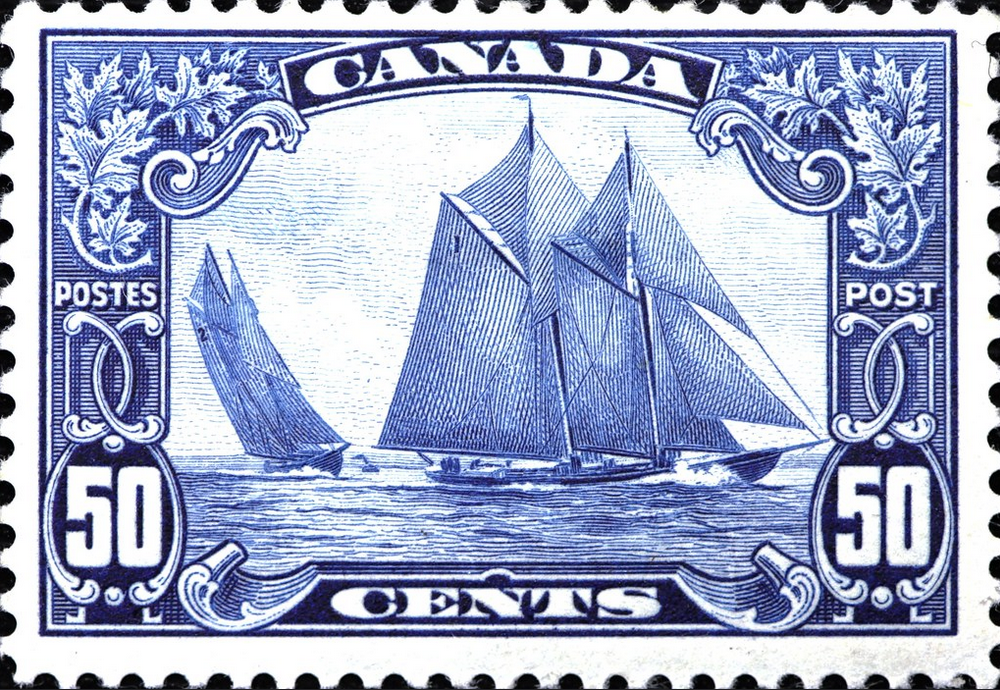

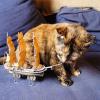
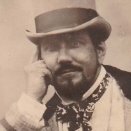
.thumb.jpeg.fc5d633a7b34428fcf19419a73d56d55.jpeg)
